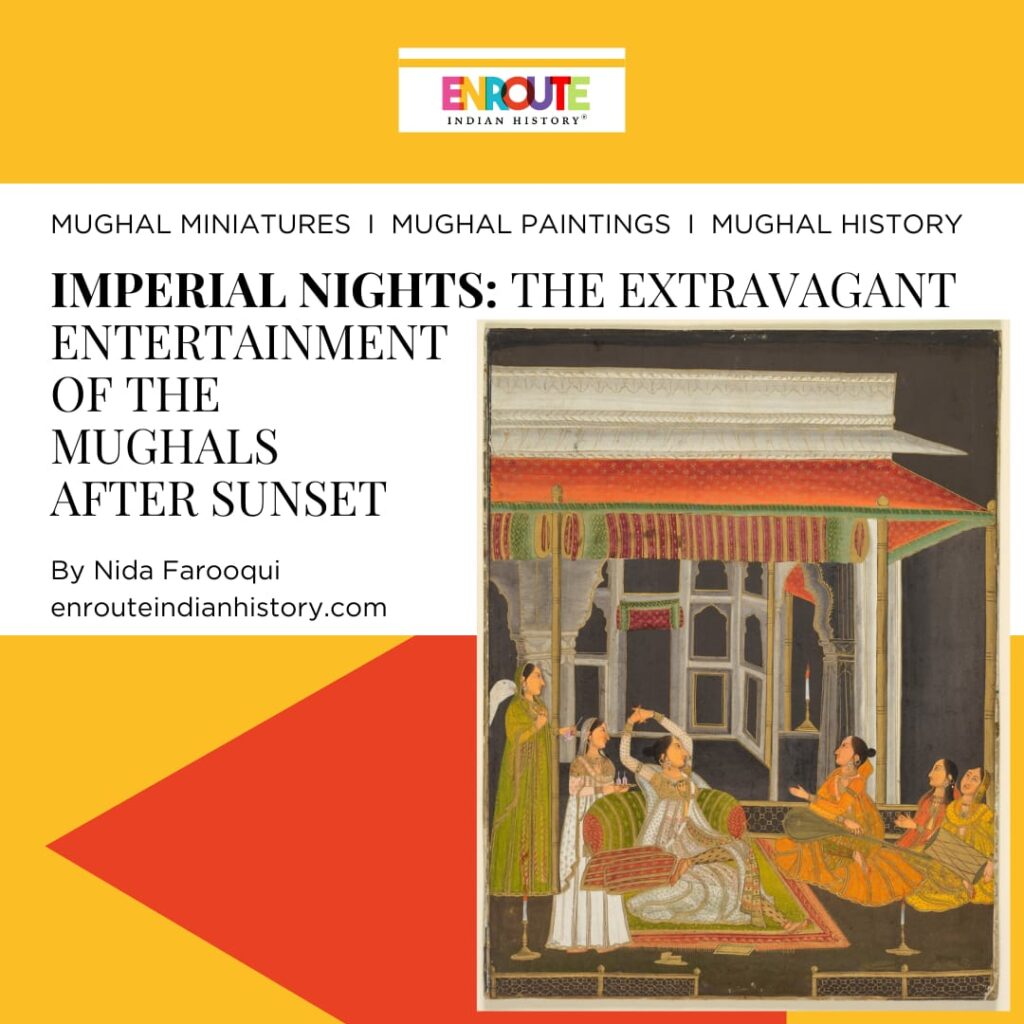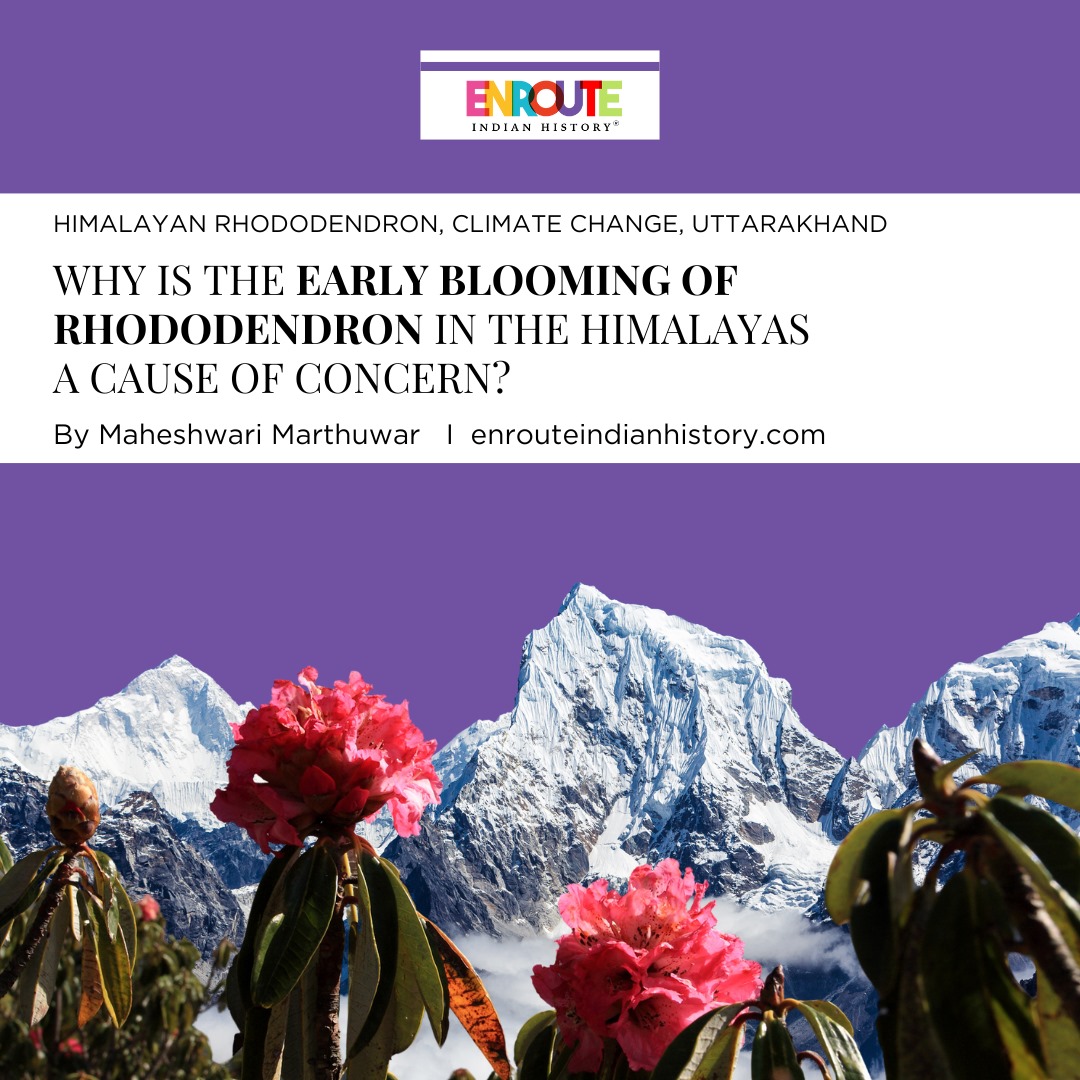Imperial Nights: The Extravagant Entertainment of the Mughals After Sunset
- enrouteI
- December 14, 2023

Exploring the Rich Entertainment Culture of Mughal Evenings
As the sun gracefully descended beyond the horizon, casting a warm, golden hue over the majestic palaces and expansive gardens of the Mughal Empire, a captivating saga of grandeur and magnificence unfolded. Renowned for their refined tastes and opulent lifestyles, the Mughal emperors orchestrated nightly spectacles that went far beyond the ordinary, embracing the extraordinary with unparalleled finesse. For the Mughals, the shroud of darkness wasn’t merely an absence of light; it served as a canvas upon which they painted a vibrant tapestry of extravagant entertainment, a testament to their sophisticated sensibilities and profound love for the arts. Immersed in a rich fusion of art, music, dance, and culinary brilliance, these imperial evenings not only dispelled the shadows but also left an enduring imprint on the pages of history. They stand as a testament to the grandeur of a dynasty that wholeheartedly embraced the pursuit of pleasure and enlightenment, weaving a narrative of cultural richness that continues to captivate imaginations.

( Smithsonian Museum, Washington, D.C ; A portrait of royal entertainment attributed to Surdas, dating back to 1600 CE.)
Summer Escapes to Kashmir’s Pleasure Gardens
During medieval India, Mughal Emperors pioneered the concept of leisure travel for enjoyment and relaxation. Seeking respite from the oppressive summer heat of Delhi and Agra, they were drawn to the serene landscapes of Kashmir and the Pinjar Hills. In these cool and invigorating locales, pleasure gardens emerged as havens for leisure and recreation. Noteworthy among them were Shalimar Bagh, Nishat Bagh, Nasim Bagh, and others, each a testament to the imperial pursuit of pleasure and delight.
In the Mughal era, the realm of leisure and recreation was primarily the domain of the upper echelons of society. Food and drink, accompanied by garden soirées featuring music and dance, became the hallmark of royal entertainment. These opulent garden parties, hosted in the cool, refreshing evenings, provided a captivating backdrop for the elite class to revel in the beauty of nature, artistic performances, and culinary indulgences. The pleasure gardens, with their meticulously landscaped beauty, not only offered a retreat from the summer heat but also served as enchanting venues for the Mughal nobility to unwind and partake in the refined pleasures of the night.
The Mughal emperors’ preference for Kashmir and the Pinjar Hills reflected not only a desire to escape the heat but also an appreciation for the natural beauty and tranquillity of these regions. The establishment of elaborate pleasure gardens in these locations not only provided a cooling escape but also became symbols of the Mughal rulers’ affinity for luxury and leisure. This pattern of leisure travel and the cultivation of pleasure gardens not only served as a means of escape but also contributed to the cultural legacy of the Mughal Empire.

( The Metropolitan Museum, New York ; A portrait of a prince and ladies in the garden by Nidha Mal dating back to the mid – eighteenth century.)
This leisurely depiction captures the refined aesthetic of later Mughal painting, as seen in provincial hubs like Lucknow during the eighteenth century. In this scene, a prince and his companion enjoy a hookah while accompanied by ladies in the delightful ambiance of a palace garden enclosed by walls.
In the seventeenth century, Mughal paintings provided intimate glimpses into the private lives of the court, capturing serene moments of emperors, queens, princes, and princesses. These depictions diverged markedly from their formal portraits, offering a unique portrayal of Mughal entertainment after nightfall. The artwork illuminated the subtle nuances of evening gatherings, where the imperial elite engaged in leisurely activities, fostering an atmosphere of cultural refinement and refined camaraderie. The paintings, with their nuanced details, unveil the quieter, more personal facets of Mughal nightlife, inviting viewers into a world where the royalty reveled in the pleasures of the night.

(The Metropolitan Museum, New York ; Princess entertaining a visitor on the balcony, dating back to the mid – second half of the seventeenth century.)
In this enchanting portrayal, a princess graciously hosts her visitor amidst a wealth of exquisite objects—a finely crafted carpet, elegant ewers, a melodic musical instrument, precious jewellery, and a delicate fly whisk. The backdrop unfolds in the picturesque Kashmir valley, characterised by distinctive fronds of land extending into the lake, framed by the majestic, snow-clad peaks in the distance. This scene captures the opulence and sophistication of a royal rendezvous, transporting the viewer to the idyllic landscapes and refined ambiance of the Mughal era.
Mughal Princes’ Nightly Garden Soirees
In the ethereal glow of moonlit nights, Mughal princes painted scenes of romance and sophistication in the secluded havens of palace balconies and verdant gardens. Lanterns cast a gentle radiance, and the fragrance of blossoms wafted through the air, enveloping the surroundings in an aura of enchantment.
Within these nocturnal retreats, Mughal royalty engaged in leisurely pursuits, seeking companionship and delight. The soft rustle of leaves and the melodious tunes of classical music created a backdrop for intimate gatherings, where laughter, poetic verses, and the rhythmic grace of dance intertwined seamlessly.
In the embrace of these gardens, princesses adorned in resplendent fabrics and adorned with intricate jewels added a touch of allure to the gatherings. The atmosphere resonated with the delicate clinking of crystal, forming a symphony that echoed the opulence and refinement of the Mughal elite.
Under the celestial expanse, Mughal princes, surrounded by the beauty of nature and the captivating presence of their companions, crafted moments that transcended the ordinary. These nights in the garden weren’t mere respites from court formalities; they were expressions of the Mughal spirit, where the pursuit of pleasure and enlightenment converged in the tranquil embrace of moonlit revelry.

( Sotheby’s, London ; Jahangir with his ladies under a canopy on a garden terrace, circa 1620 – 40, painted by Muhammad Mu’min.)

(Museum of Fine Arts, Boston ; Dara Shikoh with his consort sitting in a balcony and being entertained by a female musician playing sitar. This painting is attributed to Balchand.)
Enchanting Evenings in the Courts of Mughal Noble Women
Within the resplendent courts of the Mughal Empire, noble women experienced enchanting evenings filled with refined entertainment and cultural indulgence. As the sun dipped below the horizon, the palace came alive with the anticipation of nightfall, offering a canvas for leisure and amusement.
In the intimate spaces of harem and chambers adorned with opulent fabrics, noble women were treated to an array of captivating activities. A symphony of classical music and the rhythmic cadence of dance created an ambiance that echoed with sophistication. Accomplished musicians, poets, and dancers graced the gatherings, weaving tales of romance and artistic expression.
The aroma of exotic perfumes lingered in the air as attendants presented trays of culinary delights, showcasing the culinary expertise of the imperial kitchen. The nights unfolded in a series of graceful movements, with storytelling, poetry recitals, and perhaps even the occasional game of skill or chance adding to the tapestry of entertainment.
The gardens, illuminated by softly glowing lanterns, provided a serene backdrop for these nocturnal soirees. Noble women, adorned in exquisite attire and adorned with intricate jewellery, revelled in the camaraderie of the night, fostering connections and friendships.
Manucci thus sums up the amusements of the princesses and other high class ladies, “They have the permission to enjoy the pleasure of the comedy and the dance, to listen to tales and stories of love, to recline upon bed of. flowers, to walk about in gardens, to listen to the murmuring of the running waters, to hear singing or other similar pastimes.”
These gatherings weren’t merely social occasions; they were a celebration of the multifaceted talents and intellect of Mughal noble women. In the quietude of the night, beneath the star-studded sky, they found moments of respite, joy, and cultural enrichment, making each nocturnal gathering a testament to the refined tastes and pursuits of the Mughal elite.

(The Cleveland Museum of Art, OH ; A Princess on the terrace with attendants at night, c.1760.)

(The Metropolitan Museum, New York ; Ladies of the zenana on the roof terrace being entertained by Ruknuddin, 1675.)
In the captivating mosaic of Mughal history, the evenings of entertainment emerge as vivid strokes, portraying a realm of splendour, sophistication, and cultural richness. As daylight waned, the imperial courts metamorphosed into realms of enchantment, where the aristocracy engaged in leisurely pursuits, artistic expressions, and the jubilant celebration of existence.
Under the moonlit canopy, palace gardens and balconies became witnesses to the fusion of music, dance, and intellectual discourse—a symphony that echoed the soul of the Mughal era. Whether noble women, princes, or emperors, each participant immersed themselves in the cultural vibrancy, forming connections, nurturing camaraderie, and relishing the pursuit of joy and enlightenment.
These evenings were not fleeting interludes but rather portals into a world where elegance intertwined with festivity, where artistic expression harmonised with the pleasure of shared company. The exquisite paintings capturing scenes of royalty in tranquil gardens and the tales of moonlit gatherings bequeath to us a legacy of a time when the Mughal Empire illuminated the night with a brilliance that transcended the commonplace.
Reflecting on these magnificent nights, we are transported to an era where, beyond the grandeur of power and conquests, the Mughals cherished the beauty found in shared moments, the allure of cultural expression, and the tranquillity discovered in the embrace of moonlit gardens. In every musical note, every dance, and every whispered conversation, the echoes of Mughal evenings linger, beckoning us to enter a world where the pursuit of pleasure was elevated to an art form, and the nights were canvases painted with the hues of extravagance and grace.
References
- Chopra, P. N. “GAMES, SPORTS AND OTHER AMUSEMENTS DURING MUGHAL TIMES.” Proceedings of the Indian History Congress 15 (1952): 268–73. http://www.jstor.org/stable/45436494.
- Mukherjee, Suman. “LEISURE AND RECREATION IN COLONIAL BENGAL: A SOCIO-CULTURAL STUDY.” Proceedings of the Indian History Congress 71 (2010): 764–73. http://www.jstor.org/stable/44147545.
- Pearson, Michael Parker. “Recreation in Mughal India.” International Journal of The History of Sport 1 (1984): 335-350.
- “Past present: Mughals and indoor games – Newspaper – DAWN.COM.” 2011. Dawn. https://www.dawn.com/news/616197/past-present-mughals-and-indoor-games.
- May 15, 2024
- 6 Min Read

























